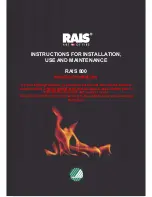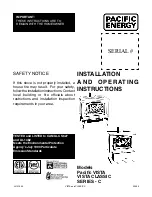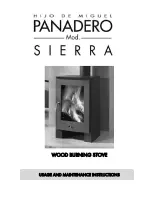
7
If the stovepipe is fitted with a baffle, it must be manually operated, visibly placed for ease
of use, and must not close completely. Consult your chimney expert if you have any
questions. Important! Make sure that there is easy access to the chimney cleanout
door.
Operating instructions
First Fire
Your new RAIS should be broken in gently for top performance and to prevent paint
damage, cracks in the firebrick, and excessive wear and tear.
Start with a small fire (never overload the firebox) to allow the materials to get
accustomed to the higher temperatures, and then gradually increase the intensity. Use up
to a maximum of 2 logs. As a safety precaution when the fire heats up, use the
protective door handles.
For the first few fires you may detect a strange smell that comes from "heat treating" the
paint and materials. This is normal and will soon disappear. Just insure there is plenty of
fresh air in the room!
Furthermore, during the initial heating up and cooling down, some "click-sounds" may
occur from the metals being exposed to the large differences in temperature. This is
normal.
For wood to burn correctly, the right amount of air has to be supplied at the right
time and places.
Primary air is defined as combustion air for burning the “mass of wood" and stimulates
production of volatile gases.
Secondary air is used to burn off the gases at high temperatures (above 1,000°F (540°C))
and to keep the glass free of soot.
Basically, the primary air is used to start the fire, and the secondary air is used to maintain
the fire.
The RAIS 4 and RAIS 106 stoves are equipped with an air control handle on the left side
just below the door. When the handle is pushed all the way right to Position 1, the primary
air and secondary air are both fully open. When the handle is pushed left to the center to
Position 2, the stove gets only the full secondary air, and if the handle is pushed to the far
left toward Position 0, the air supply is reduced. At Position 0, the stove will shut down.
On the RAIS 86, the air controls are vents located on the front of the doors. Open both
vents (to the right) for Position 1. Close the top vent to the left for Position 2, and
Position 0 is when both vents are closed.































